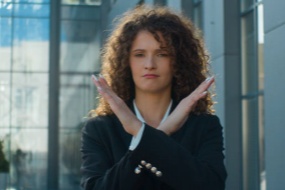Mindfulness-Based Stress Reduction: Unlocking a Life Free of Worries(Part 2)
Author:
Serenity
, Published on
Oct 8, 2024 04 pm
Common Practices in Mindfulness-Based Stress Reduction (MBSR)
- Mindful Breathing Awareness: Focus on the natural process of breathing to cultivate awareness and acceptance of the present moment. This practice helps you relax both mind and body, reduce distracting thoughts, and enhance sensitivity to yourself and your surroundings.
- Mindfulness Meditation: This involves concentrating attention on breathing, bodily sensations, or present experiences. It can take the following forms:
- Sitting Meditation: Sit in a comfortable position and focus on your breathing or any present sensations.
- Walking Meditation: Focus on the sensations of each step while walking, paying attention to how your feet touch the ground.
- Lying-Down Meditation: Lie down and gradually focus on each part of your body, releasing tension and stress.
- Body Scan: This practice involves paying attention to each part of the body, usually starting from the toes and moving upwards to the head. It helps to enhance bodily awareness, relax muscles, and reduce tension.
- Mindful Eating: Mindful eating involves consciously paying attention to the color, smell, taste, and texture of food, eating slowly and deliberately to enhance the dining experience and improve eating habits and health.
- Mindful Daily Activities: Mindfulness can be integrated into daily activities such as washing dishes, cleaning, or driving. By staying focused on each movement and sensation, you bring mindfulness into everyday life.
- Mindful Walking Exercise: Would you be willing to take a few moments while walking to focus on the sensation of your feet contacting the ground? This can be a simple yet effective mindfulness practice.

Recommended Ways to Practice MBSR
- Option 1: Find a quiet, comfortable, and safe environment where you can dedicate 5-10 minutes to follow a guided audio prompt for practice.
- Option 2: Engage in one-on-one counseling or group guidance led by a psychologist or social worker.
- Option 3: Incorporate brief mindfulness exercises into daily life through activities like breathing, walking, eating, or writing.
Principles of MBSR
- From the perspective of applied psychology: Mindfulness temporarily allows individuals to distance themselves from stressful environments, which helps in relieving emotional stress and promoting relaxation. It also alleviates physical discomfort, reducing bodily tension. Over time, MBSR enhances non-judgmental awareness of the present and oneself, teaching acceptance of life circumstances and increasing self-esteem, self-efficacy, and the ability to cope with life’s challenges.
- From the perspective of cognitive and neuroscience: According to Hölzel’s (2011) research, mindfulness meditation activates brain areas related to emotional regulation, such as the anterior cingulate cortex (ACC), orbitofrontal cortex (OFC), and insula. These regions contain high concentrations of opioid receptors, which are linked to emotional regulation and pain control.Research by Fadel Zeidan et al. (2016) suggests that mindfulness meditation may activate multiple brain networks and neurochemical mechanisms to relieve pain, involving increased activity in the lateral orbitofrontal cortex/ventrolateral prefrontal cortex, the cingulate cortex, and the dorsal anterior cingulate cortex, which are associated with pain evaluation.

Mindfulness Practice: Eating a Raisin Mindfully
During this practice, various thoughts and feelings may arise. Allow them to appear and fade away while you focus on the exercise. If you find your mind wandering, gently note what distracted you, then bring your attention back to the raisin.
- Pick it up: Take a raisin and place it in your hand. Observe it as if you’re a curious scientist seeing a raisin for the first time.
- Observe: Notice its shape, color, and contours. It’s not just one color; it has various shades. Pay attention to its weight in your hand.
- Touch: Gently squeeze it and feel its texture.
- Smell: Bring it close to your nose and smell it. Focus on its scent.
- Put it in your mouth: Place it near your lips, but pause before biting into it. Notice what happens in your mouth—your saliva, the urge to bite—pause a moment and refrain.
- Taste: Slowly bite the raisin in half, paying attention to what your teeth are doing. Let the raisin rest on your tongue for a moment. Close your eyes to enhance the experience. Just notice any impulses, then gently explore the raisin’s taste and texture with your tongue.
- Swallow: When you feel the urge to swallow, pause to notice that sensation. When you do swallow, observe the movement and sound in your throat, as well as what your tongue is doing afterward.
This concludes today’s mindfulness practice. Do you feel more calm and relaxed? May you experience peace and joy in your life.

Latest Posts







